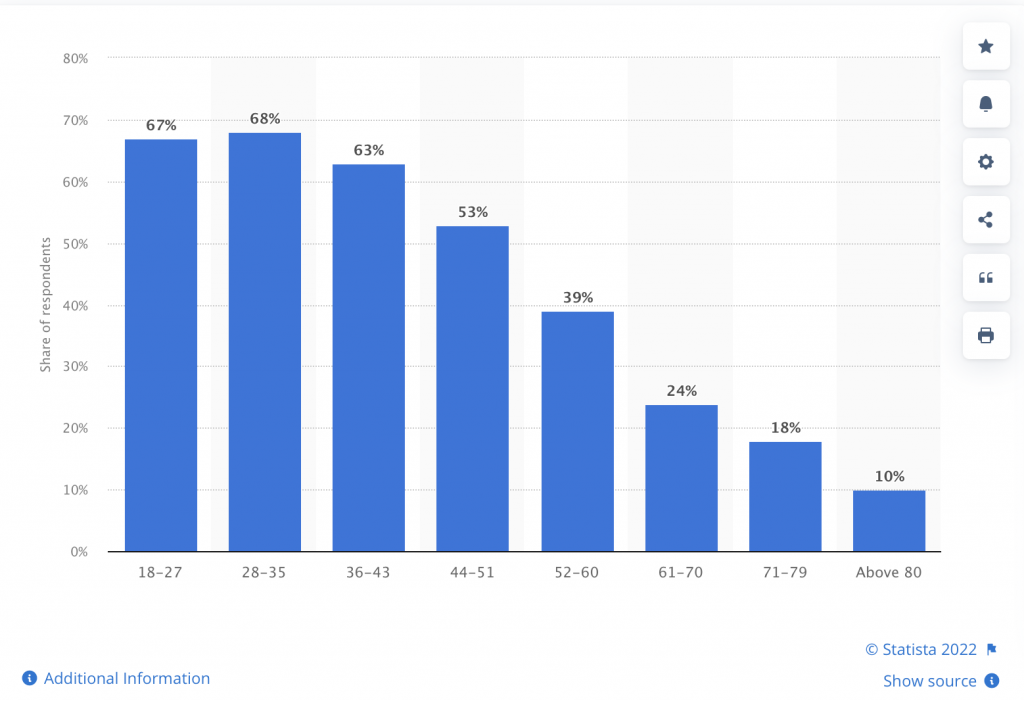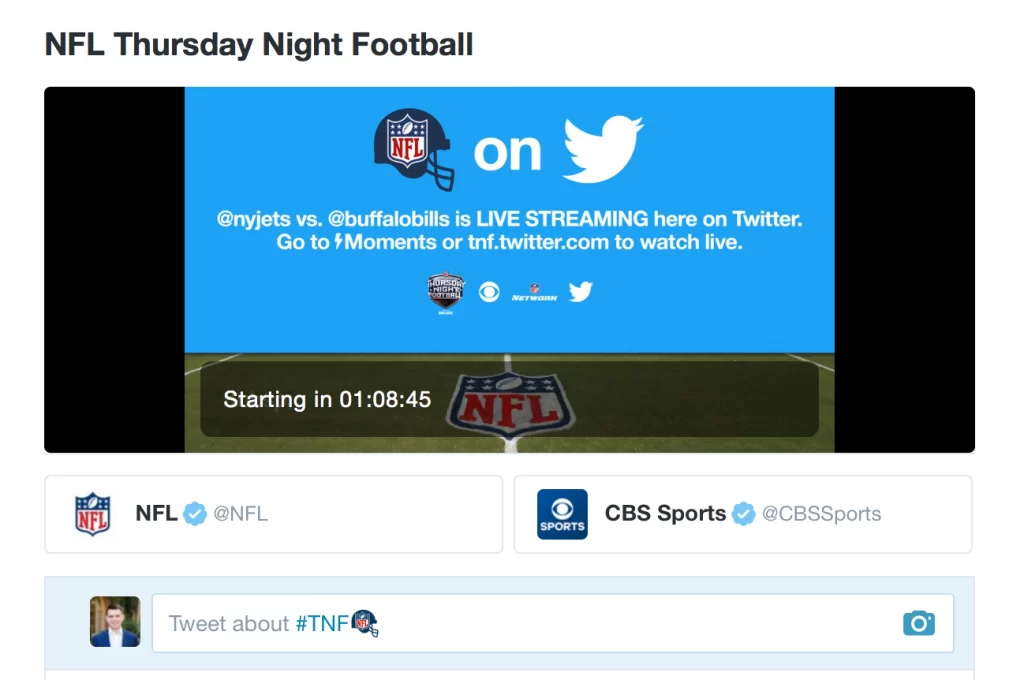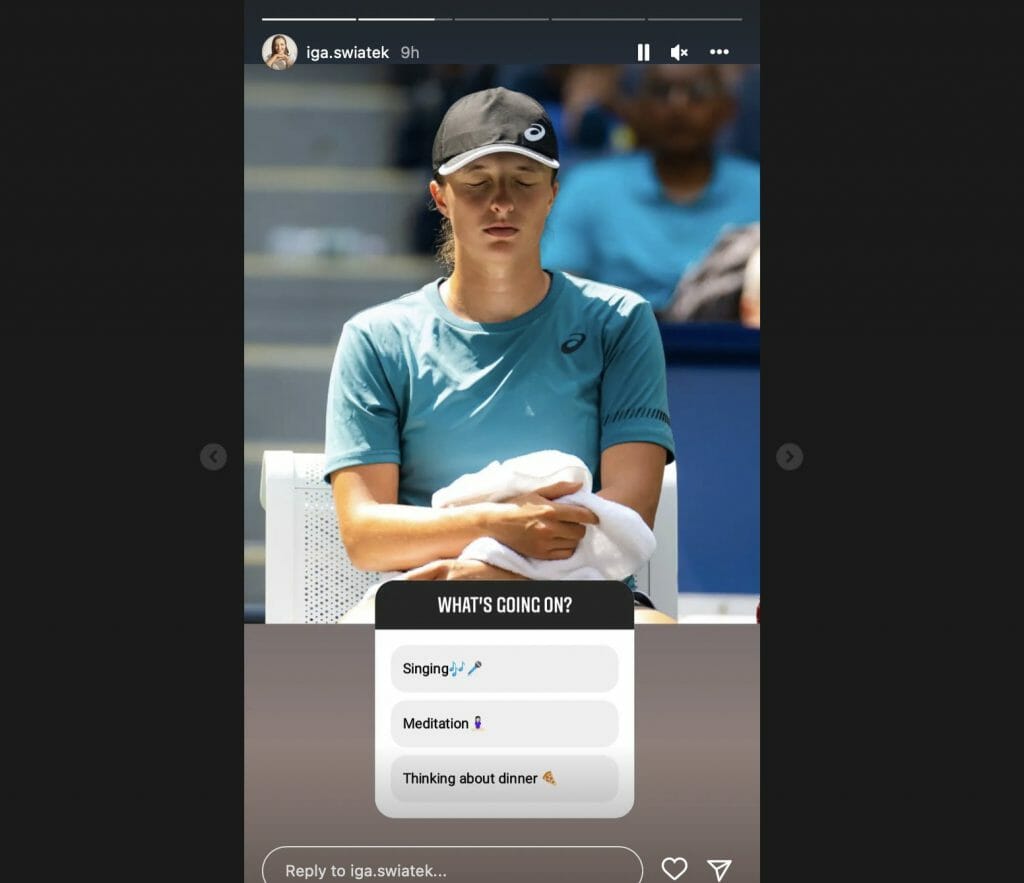From thousands of Chelsea fans coming together to petition against a referee to live streams of Thursday Night Football on Twitter–there’s no doubt that social media has influence in the world of sports. Play your cards right and you could turn it into a major asset for promoting your sports team or athletes. In this post, we take a closer look at the state of social media in sports and how to effectively use it in sports marketing. Let’s get started.
The Winner’s Guide to Using Social Media in Sports for Fan Engagement:
Navigating the Current State of Sports Social Media
It goes without saying that social media is already a huge part of our lives. We use it to follow our favorite celebrities, find out more about brands, and participate in trending conversations. It’s no different when it comes to the sports industry, with people following their favorite athletes and sports teams on social media.
By breaking down communication barriers, social media offers a way for sports teams and athletes to connect with their fans and strengthen their bonds. In fact, over 35% of U.K soccer fans on Twitter are using the platform to follow their team and athletes more closely than before they used social media. They also feel more closely bonded to their team.
This trend can be observed even better among younger age groups consisting of people aged between 16 and 29. Among people in these age groups, 63% liked a sports brand on Facebook while 44% followed a sports brand on Twitter.
Moreover, the use of social media to consume sports content isn’t just limited to the U.K. According to a Capgemini survey, 67% of respondents aged between 18 and 27 were consuming sports content through social media platforms like Twitter, Facebook, and YouTube. The trend rises slightly among 28-27-year-olds, 68% of whom use social media to watch sports content.

Source: statista.com
But what do these percentages translate to in terms of actual engagement numbers? Looking at the social media accounts of leading sports brands, events, athletes, and teams can help us answer that question. SportsCenter, for instance, has amassed 31.7 million followers on Instagram while the official NFL Twitter page has 30.7 million.
These massive follower counts also translate to significant engagements. During the SuperBowl LVI, the event generated 1.8 billion impressions on social media and 618 million video views with 78 million engagements. Further surpassing these numbers, WrestleMania 38 hit a record 2.2 billion social media impressions with 1.1 billion video views, resulting in 87 million engagements.
Even from just these numbers alone, it’s clear to see the power of social media for sports marketing. And with the right strategy, you could use it to grow fan engagement for your sports team, brand, or athletes.
Tips on Social Media Sports Marketing to Engage Fans
Considering the significance and impact of social media in sports, you can’t afford to miss out if you want to get ahead of the competition. Check out the following tips on how to engage sports fans using social media.
1. Generate real-time engagement with live streaming
When it comes to sports, nothing beats real-time engagement while tensions are high, and fans are enthused to share their commentary with others. Livestreaming some parts of your sporting event can be a great way to generate this type of engagement on social media.
In fact, 42% of people want to see more live sports on social media. And 39% of social media users are already streaming sports live on social media.
While media partnerships and restrictions may prevent you from live streaming your entire event for free, you might be able to stream certain events on platforms like Twitter or YouTube. This could help you build momentum for larger games and events, enticing fans just enough for the major events.
Twitter has even hosted the live stream for NFL’s Thursday Night Football. This allowed for consistent fan engagement by giving them more football.

Source: techcrunch.com
2. Provide real-time updates and highlights throughout the event
Even for events that can’t be streamed live on social media, there’s still a way to generate fan engagement in real time. You can use in-the-moment platforms like Twitter and features like Instagram Stories to continuously share updates and highlights as the event is taking place. That way, you can give your fans the opportunity to share their thoughts and opinions throughout the event.
This could be a great way to remain top of mind and keep the conversations current. Moreover, it allows fans who are unable to watch the live event to stay informed on the latest updates such as who scored a goal, who received a penalty, or which boxer threw a deadly uppercut. Deloitte also found that social media was one of the top preferred channels to get rapid updates among sports fans.
Liverpool FC regularly shares highlights in real-time as the team plays a match. This allows them to give fans an opportunity to share their comments and opinions about the match even as it’s happening.
78' - Trent's corner is headed into the ground by Firmino and it skips up into De Gea's grasp.
[2-0]#MUNLIV— Liverpool FC (@LFC) August 22, 2022
3. Give recognition to your biggest fans
In the world of sports, building fan loyalty is crucial to driving revenue and engagement. You need loyal supporters who keep buying your team merchandise or coming to your matches to survive as a sports team or an athlete.
While entertainment is certainly the first factor in building a loyal fanbase, fans also love to be rewarded for their loyalty. That reward can be in the form of recognition. And social media can be the perfect channel to recognize your biggest fans and strengthen their loyalty.
You could give them a shout-out, respond to their comments, and show them that you’re listening. You could even tap into the interests and values of more niche and obscure fanbases to show your appreciation for them.
As the second biggest team in the English Premier League, Chelsea FC has over 49 million fans worldwide. One reason for the team’s huge popularity is their ability to engage and acknowledge fans on social media.
4. Build excitement through pre-game teasers
For many sports events, one of the main goals is to drive revenue by selling as many tickets as possible. Or in the case of pay-per-view and live streaming events, you’d want to drive as many purchases as possible. A great way to achieve this goal is by building excitement during the lead-up to the event.
Social media serves as an effective channel to do this as it allows you to share pre-game teasers that could entice fans to tune into the event. For instance, you could share videos of athletes as they warm up for training or you could post photos of them gearing up. Instagram Stories of prep work at the venue could also be a great way to entice your fans to watch the event.
For example, Misfits Boxing regularly shared Instagram Reels showcasing the training session for YouTube star KSI as he prepped for his fight with Swarmz and Luis Alcaraz Pineda. This managed to drive tons of views and engagement among fans, with one of the Reels garnering 484k views and 13.8k only 3 hours after it was posted. Not to mention hundreds of comments cheering for the star. These numbers speak volumes about the impact of Reels, considering how the page only has 49k followers to begin with.
5. Show your support for a social cause
Another way to strengthen your bond with fans is by showing that you care about causes and issues that are important to them. A survey by Nielsen even found that fans expect sports leagues and athletes to lead the way in supporting social causes. Whether it’s about empowering youth or taking a stand against racial discrimination–sports fans are likely to back athletes and sports teams on important social justice issues.
According to an ESPN survey, 71% of fans supported athletes who spoke out about racial injustice. So, it’s no surprise that 55% of NBA fans supported in-court messaging that stood up for the Black Lives Matter movement.
Considering this, you should take the opportunity to share your support for a relevant social cause via social media. Make sure to focus on issues that your fans care about and align with your team’s values. That way, you can authentically support the cause and earn the trust of your fans.
As for the causes that are important to sports fans, the Nielsen survey found that 68% of fans were most passionate about animal welfare. Other causes that sports fans cared about included equal opportunity, food availability, human rights, renewable energy, and access to education.
That’s why Naomi Osaka received tons of support from fans for helping a young tennis player to pursue her dream. Naomi shared a video of the young player thanking her, which received 74.4k views on Twitter.
This video means so much to me. I always wanted to help young tennis players that were like me, talented but could use some help with resources. I wanted to make it easier for the kids that will travel down the same path I did. So thankful for the grant from Play Academy ❤️ pic.twitter.com/1dC2ggAlFR
— NaomiOsaka大坂なおみ (@naomiosaka) August 20, 2022
6. Encourage athletes to take fans behind-the-scenes
Athletes are the human faces behind your sports brand or team. As such, they can help you build a human connection with your fans. Further, they could bring fans closer to brands and sponsors as well. In fact, 26% of avid sports fans who consume sports content through social media say that athletes help them connect with brands and sponsors.
So, don’t hesitate to bring athletes to the front of the conversation. To build a deeper connection, encourage them to take fans behind the scenes–whether they’re prepping for a game or chilling out after a big one. They could share candid photos and in-the-moment videos that feel “human” as they give fans an inside look into an athlete’s life.
Instagram and Facebook Stories are the perfect way for athletes to give a behind-the-scenes look to their followers. Alternatively, they could also share Instagram Reels to show how they prepare for a game. That’s exactly what Simona Halep did to show her fans how she prepared for the U.S Open 2022.
7. Tell athlete stories to build a closer connection
Besides athletes interacting directly with their followers, another way to build a strong connection with fans is by telling their stories. As much as fans like to idolize athletes, they also want to be able to relate to them. So, sharing social media posts about a player or athlete’s story could bring in that relatability factor.
You could talk about the challenges that an athlete had to overcome to get to where they are today. This could be poverty, family issues, health problems, discrimination, and so on. The idea is to humanize the athletes by showing how they’re real people with real problems and real lives. Essentially the goal is to show fans that these athletes are just like everyone else.
Alternatively, you could also put a spotlight on some aspects of their personal lives such as their volunteer work or their family. For example, the New England Patriots shared an article on Facebook, showing how one of their players took his son to the Gillette Stadium for the first time. This is a great way to add some positivity to your feed while showing the humanness of the player.
8. Run contests and giveaways
If there’s one thing that sports fans are known for, it’s their competitiveness. Sports fans like to win, and they enjoy the thrill of competing for something. This is why giving them the opportunity to win through contests and giveaways is a great way to engage them on social media.
Ideally, you should run the contest around an upcoming event to build up the excitement during the days leading up to the event. There are plenty of ways to engage your fans through contests such as asking them to caption something, share a post with their followers, correctly guess something, and so on.
The Arizona Cardinals ran a “Fan of the Year” contest where they asked their followers to nominate someone who’s an extraordinary fan of the team. This is a great way to give recognition to your fans while simultaneously giving them the chance to win something.
The 2022 #FanOfTheYear contest is here!
Nominate someone you think deserves to represent the Cardinals this year!— Arizona Cardinals (@AZCardinals) August 20, 2022
9. Leverage the power of humor
Humor is powerful and it’s infectious. In fact, it could be the very tool you need to boost your social media engagement and drive better visibility. When people see something funny that you posted, they could feel compelled to engage with it by reacting or commenting. Some might even share the post with their friends.
So, humor could be a great addition to your social media strategy as it helps you entertain and engage your fans. Share relevant memes, have your mascot perform some hilarious challenge, or show your athletes just letting loose and having fun. You could even conduct funny Instagram Stories polls like Iga Świątek did in the following Instagram Story.

Source: instagram.com
Let the Games Begin!
Ready to take your sports brand on a whole new level through social media sports marketing? Use the above tips and ideas to engage sports fans using social. Even something as (seemingly) simple as recognizing them could help you win their lifetime loyalty.
Frequently Asked Questions
Why is social media important in sports?
Social media brings sports teams and athletes closer to their fans, giving them the unique opportunity to strengthen their bonds, engage them, and win their loyalty. It could also be used to build up excitement for upcoming sporting events, which will subsequently contribute to better ticket sales and attendance.
Which social media is the most important in sports?
Being the biggest social media platform in terms of user base, Facebook continues to be the most important platform in sports. Many sports organizations also report having had the most success with it. Additionally, other major social networks such as Twitter and Instagram are also effective for social media sports marketing.
How do sports teams use social media?
Sports teams are using social media to share pre-game teasers, recognize and engage with their fans, share live updates, generate excitement for upcoming events, and host contests and giveaways.
How do you grow sports social media?
You can grow sports social media by following the examples of major sports organizations. This includes putting a spotlight on your star athletes, sharing pre-game teasers to build excitement, and creating visual recaps of the game.
How many people use social media for sports?
According to Capgemini, 67% of survey respondents aged between 18 and 27 were consuming sports content through social media platforms. Among 28-27-year-olds, 68% of respondents used social media to watch sports content.


